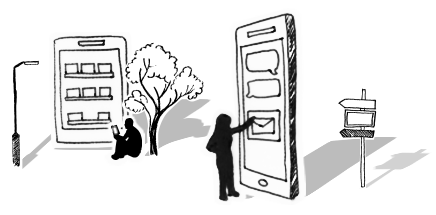




How Can Kaizen Help Us Deliver Better Change?
Can Kaizen, the Japanese theory of ‘good change’ bring people together at all levels in a business for faster, continual change?
Kaizen – Japanese translated literally as ‘good change’ – is the practice of continuous improvement.
Under it, all employees are responsible for identifying weaknesses and ideas for improvement and everyone, at every level in the organisation, is instrumental in making change happen. Everyone communicates across all levels to share ideas and collaborate.
When applied to business change, this tackles something really important: the disconnect between senior people deciding strategy and the employees carrying out operational work.
When senior people don’t consider what it’s really like on the front line they don’t design a strategy that will deliver the intended benefits from change. And, when front line staff aren’t involved in the big picture, they won’t engage with and see the change through to its full potential. In other words change never really delivers what it was meant to.
Applying Kaizen to Change Management
If you work in change management – delivering change to people, and making sure benefits are delivered to the business,- you’ll know it’s crucial to involve and empower the people who the change affects.
Having been fully immersed in a client’s organisational change programme (training on a new IT system and a redefinition of roles within the operational structure – lots of moving parts and pockets of resistance), a recent break gave me a well-timed opportunity for reflection.
Contemplating the journey and doing some root-cause analysis on the barriers we had encountered (and overcame) I kept coming back to the same question: How can we overcome barriers through the principle of Kaizen: driving communication, contribution and continuous learning?
Create Trojan Mice Good change often relies on good conversations. If conversations and consultation can be had with the people that the change is most likely to affect, they can actually act as catalysts for change, accelerating it and providing operational and customer facing insights that keep change on track to deliver more back to the business.
During our client’s project, we had to work hard to make sure senior leaders understood the value of engaging and sustaining these influencers. Where they previously hadn’t, the end user community was hard to win over initially, creating delay and wasting opportunity for people to add value.
Continuous Improvement The idea that big results come from many small changes accumulated over time struck a chord with me. A learning organisation is more than just getting individuals learning (although that is very important); it is ensuring the organisation itself learns and that individuals are part of a culture which conscientiously reflects at every level.
Could we have a pre-made group of change-ready employees? Could we create a learning organisation?
Empower the frontline All sectors are having to reduce their time to market whether they are offering services or products. The quicker we can identify new opportunities and deliver them to customers the better our chances of survival. But if the speed to market has to get quicker then the process of decision-making and delivering change must get shorter. Ultimately people dealing directly with customers, suppliers and other key stakeholders will need to be engaged and have an active voice and input; continually innovating and learning to drive change.
We live and work in a time of extraordinary change. We need to ride that change and make it work for us rather than forever battling to keep up. The idea of a continuous learning organisation is really relevant as organisations struggle to respond to pressures of increased competition, greater demands from customers and a faster pace of change, often with fewer staff.
The ability of a company to learn, adapt and be responsive is now being seen as the only way to sustain competitive advantage. Could the concept of Kaizen then, with its emphasis on active influence and continuous improvement for everyone, accelerate change and make it stick?
To get the latest change tips, advice and guidance directly to your inbox, sign up to our monthly Business Change Digest.
